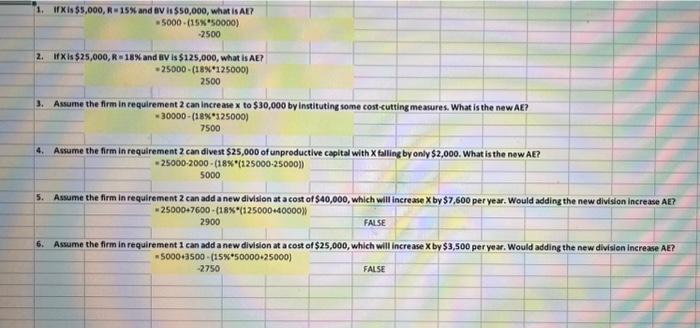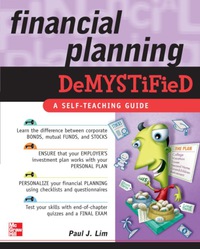Answered step by step
Verified Expert Solution
Question
1 Approved Answer
1. If X is $5,000, R = 15% and BV is $50,000, what is AE? = 5000-(15%*50000) -2500 2. IfX is $25,000, R = 18%
1. If X is $5,000, R = 15% and BV is $50,000, what is AE? = 5000-(15%*50000) -2500 2. IfX is $25,000, R = 18% and BV is $125,000, what is AE? = 25000 - ( 18 %*125000) 2500 3. 4. Assume the firm in requirement 2 can divest $25,000 of unproductive capital with X falling by only $2,000. What is the new AE? = 25000-2000-( 18% *( 125000-25000)) 5. Assume the firm in requirement 2 can increase x to $30,000 by instituting some cost-cutting measures. What is the new AE? = 30000 - ( 18 %*125000) 7500 6. 5000 Assume the firm in requirement 2 can add a new division at a cost of $40,000, which will increase X by $7,600 per year. Would adding the new division increase AE? = 25000+7600 - ( 18% *( 125000+40000)) 2900 FALSE Assume the firm in requirement 1 can add a new division at a cost of $25,000, which will increase X by $3,500 per year. Would adding the new division increase AE? = 5000+3500-( 15%*50000+25000) -2750 FALSE

Step by Step Solution
There are 3 Steps involved in it
Step: 1

Get Instant Access to Expert-Tailored Solutions
See step-by-step solutions with expert insights and AI powered tools for academic success
Step: 2

Step: 3

Ace Your Homework with AI
Get the answers you need in no time with our AI-driven, step-by-step assistance
Get Started


